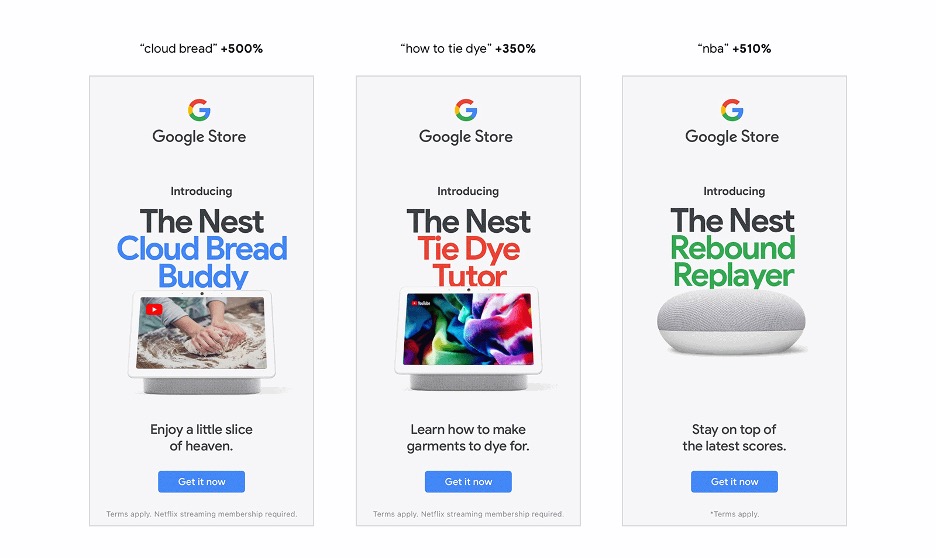It’s no secret that automation’s role in media buying is rapidly increasing. And while investing in the same solutions as your competitors may be enough to keep up with them, it isn’t enough to get ahead.
What’s the secret to gaining a real competitive advantage with automated technology? Combining it with good old-fashioned human intelligence. Research underpinning the recent book The AI Marketing Canvas and observations from work done at Google with hundreds of CMOs suggest that, to unleash the full power machine learning offers, you must pair it with unique insights only you can bring to the table.
In other words, unless you fuel automation with data and experiences that are exclusive to your business, you’ll get the same results as everyone else.
But the potential of machine learning goes beyond optimizing media and crunching numbers. It also frees up time for businesses and agencies to focus on taking their teamwork to the next level. As machine learning picks up pace, in-house and agency marketers have a unique opportunity to collaborate on work that’s more impactful and thoughtful.
Here are three tips for making the most of automation by adding a human touch.
Anchor algorithms in unique insights
Breakthroughs in artificial intelligence (AI) happen when people design better algorithms, not when machines run through massive amounts of data. For instance, take AlphaZero, a computer program designed by AI research company DeepMind to win at the game of chess.
It became the best AI chess program, because the people who engineered it flipped tradition. While automated chess programs almost exclusively analyze all possible moves before making a decision, they built AlphaZero to do the opposite: simply play as fast as possible.
You can take a page from this approach by fueling your automated marketing solutions with a unique insight tailored to your business. This could be as simple as choosing a better KPI. One popular vacation rental marketplace, for example, increased its revenue 115% by shifting focus to profitable growth rather than efficiency.
The recipe for winning campaigns calls for mixing automation with human creativity.
Your unique insight could also be a new data point, as it was for a retailer that doubled its Google Ads profits by adding product margin data—information that typically isn’t linked to media buying—into the mix.
For other companies, consolidated data could be what makes the biggest difference. A powerful example of this is how a fashion brand figured out that some consumers were 6 times more valuable than others when it combined separate customer relationship management systems into a single data management platform.
To find an insight that will spark success for your brand, start by asking your team, “What’s one piece of data we don’t have that we wish we did?” Then work with your chief information officer to get that data by running simple tests. If you see promising results, you can improve the data over time.
Fuel relevance with technology
At a time when automated media optimization is becoming the norm, ad creative is increasingly critical to success. And when it comes to crafting narratives that resonate with people, human storytellers will always have machines beat. With that being said, technology has speed and scale on its side. It can amplify and tailor messages with approaches like personalization and sequential storytelling.
That’s why the recipe for winning campaigns calls for mixing automation with human creativity. Machine learning can help home in on what consumers care about, but it’s up to real people to turn that information into compelling ads.
Prioritize digging up the latest trends by scheduling periodic insights meetings with your creative team and agency partners. Then put those insights to work with automated tools, such as Director Mix, which allows you to build myriad customized variations of your video creative.
Google’s brand marketing team, for instance, meets regularly to uncover new consumer passion points with tools like Google Trends, then tailors its product ads accordingly. When people’s interest in “cloud bread” began to surge during the first year of the pandemic, the team quickly crafted Google Home ads spotlighting it, then pushed the campaign live within 72 hours.

Test, learn, evolve and scale
Despite all the value it can provide companies, machine learning has a major weakness: It can’t come up with new ideas on its own, at least not yet. Algorithms need the right data and guidance to orient them toward meaningful goals. This requires constant testing, which for many companies requires an improvement in testing capabilities. In our experience, those that test often and scale winning strategies quickly almost always outperform their competitors.
Embracing a test-and-learn culture might mean upskilling your team. To do that, you can work with experienced media partners and also nominate an AI champion on your marketing team to lead experimentation.
The good news: There are plenty of powerful tools, including sentiment analysis and image recognition, that your team can use to hit the ground running.
Track how many tests you complete in a month and try to consistently bump up that number. Help your team get access to better testing solutions and speed up processes that can slow them down, like stakeholder approvals and creative reviews. And once there’s enough data (it doesn’t need to be perfect) for a successful test, get going.
It’s a wonderful irony in that, in a world so entrenched in technological transformation, technology alone can only get you so far. Automation works to help you maintain a competitive advantage only by pairing it with uniquely human skills: an ability to translate insights into creative ideas, and then evolve those insights based on how they perform.
There’s no better way to get started than to just get started. After all, a rough game plan in play is better than an ideal strategy in theory.
A version of this article originally appeared on Think with Google. Jim Lecinski, a clinical associate professor of marketing at Northwestern University’s Kellogg School of Management, also contributed to this article.





















